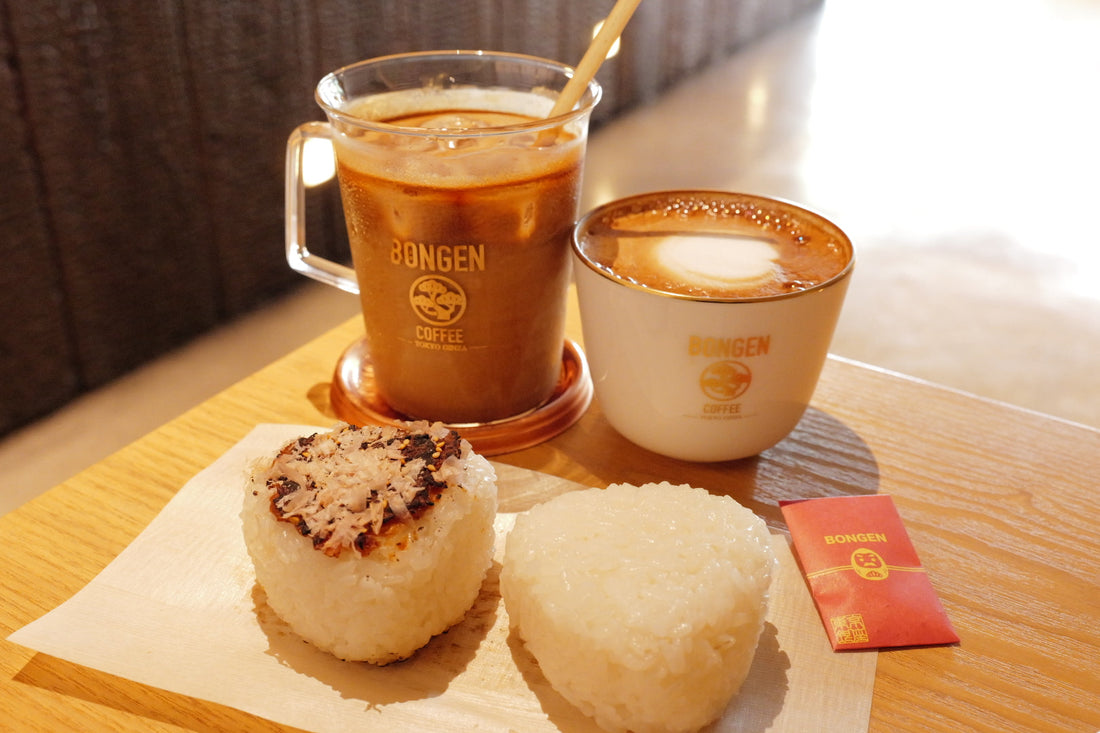閱讀材料
The History of Onigiri

The History of Onigiri
― Japan’s Most Beloved Food Tradition ―
Origins: Rice Culture in Ancient Japan
The origins of onigiri, or Japanese rice balls, can be traced back to ancient Japan, when rice cultivation first began. Archaeological findings from the Yayoi period include carbonized clumps of rice, believed to be remnants of cooked rice shaped and carried for convenience. From the moment rice became a staple, the idea of shaping it by hand into a portable form naturally emerged, laying the foundation for what would later become onigiri.
The Middle Ages: Onigiri as Battlefield Rations
By the medieval era, onigiri played a vital role as provisions for warriors. During the Sengoku period, soldiers needed food that was portable, nourishing, and easy to eat on the move. Rice balls seasoned with salt met these needs perfectly. Wrapped in bamboo or sasa leaves for preservation, onigiri sustained warriors during long journeys and battles, symbolizing practicality and resilience.
The Edo Period: Food for the People
In the Edo period, onigiri spread beyond the warrior class to become a staple for common people. Known then as nigirimeshi, they were essential for outings, festivals, and travel. Whether for kabuki theater visits or cherry blossom viewing, rice balls were the go-to portable meal. Around this time, the rise of nori seaweed farming introduced the familiar “seaweed-wrapped onigiri,” enhancing both flavor and convenience. This marks the closest form to the modern onigiri we know today.
Modern Era: A Family Staple
By the Meiji and Taisho eras, onigiri had become a daily homemade meal, central to school and work lunches. More than just food, they were also a symbol of love—mothers and families shaping rice balls by hand for their children. After World War II, onigiri once again sustained Japanese people, providing comfort and nourishment during a time of scarcity and recovery.
Contemporary Culture: Convenience and Variety
The economic boom and the rise of convenience stores in the 1970s transformed onigiri once more. “Convenience store onigiri” revolutionized accessibility, offering countless variations—from classic salmon and pickled plum to modern favorites like tuna mayo and spicy cod roe. Packaging innovations, like separate wrapping to keep the nori crisp, further boosted their popularity, making onigiri a daily staple across Japan.
Global Reach
Today, onigiri is known worldwide as “ONIGIRI”, found in Japanese restaurants, supermarkets, and specialty shops overseas. Alongside sushi and ramen, it has become a symbol of Japanese food culture abroad. Its simplicity, portability, and healthiness have made it a globally recognized form of Japanese fast food.
What Onigiri Represents
Onigiri has always symbolized more than just food:
・Love and Care: A homemade onigiri represents the warmth of family.
・Practicality: From soldiers in battle to travelers on the road, onigiri has always been the ultimate portable meal.
・Cultural Continuity: While fillings and shapes have changed, the tradition of shaping rice by hand has been passed down for generations.
Though humble in form, onigiri reflects Japanese life, history, and culture—a timeless food deeply rooted in the national identity.
Conclusion
The history of onigiri is inseparable from Japan’s rice culture, evolving from ancient provisions to Edo-period entertainment snacks, postwar staples, and modern convenience store icons. It has adapted to each era while maintaining its core as a symbol of nourishment, comfort, and cultural continuity.
Simple yet profound, onigiri remains Japan’s eternal soul food.
👉 BONGENCOFFEE | OFFICIAL SITE
https://ginza-bongen.jp/